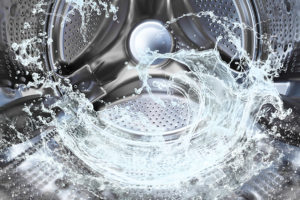
Perchloroethylene and hydrocarbon have been in use in drycleaning for many years. They are very different in origin and their properties differ. Perc is a synthetic non-flammable solvent with good solvency, while hydrocarbon solvents, a byproduct of crude oil, are flammable and have a much lower solvency power.
Perc was developed as a solvent in 1920 and has been in common use since 1955. In this year, tricholoroethylene, a previous synthetic, started to fall out of ,favour as it affected the dyes of cellulose triacetate textiles, which were then becoming fashionable. Hydrocarbon was introduced as a solvent in 1994. Its use gained some momentum as a replacement for 113, which had been popular with those handling high volumes of delicates, leather and suedes.
The growing eco movement identified 113 as a chemical that would damage the ozone layer and it was finally banned in December 1999. Both perc and hydrocarbon can produce good standards of drycleaning. In recent years other alternative solvents, such as K4, have been developed but these have yet to make an impact on the UK drycleaning industry in general.
 Some hydrocarbon machines are classed as “multisolvent” and this might make a switch to another alternative possible in the future. Bear in mind that though a switch could have costs in terms of wasted solvents, internal cleaning and modifications. Cleaners that are thinking of buying a hydrocarbon laundry machine, should take a closer look at machines that use spray systems and hot solvent.
Some hydrocarbon machines are classed as “multisolvent” and this might make a switch to another alternative possible in the future. Bear in mind that though a switch could have costs in terms of wasted solvents, internal cleaning and modifications. Cleaners that are thinking of buying a hydrocarbon laundry machine, should take a closer look at machines that use spray systems and hot solvent.
These machines have been on the market for around six years , some do not use high speed to extract the solvent from the load and they do not have a still. Spray system machines have the advantage of lower running laundry costs and machines that avoid high-speed extraction could have much lower installation costs as they will not need to be built into the floor.
, some do not use high speed to extract the solvent from the load and they do not have a still. Spray system machines have the advantage of lower running laundry costs and machines that avoid high-speed extraction could have much lower installation costs as they will not need to be built into the floor.
Source: Free Articles from ArticlesFactory.com


Speak Your Mind